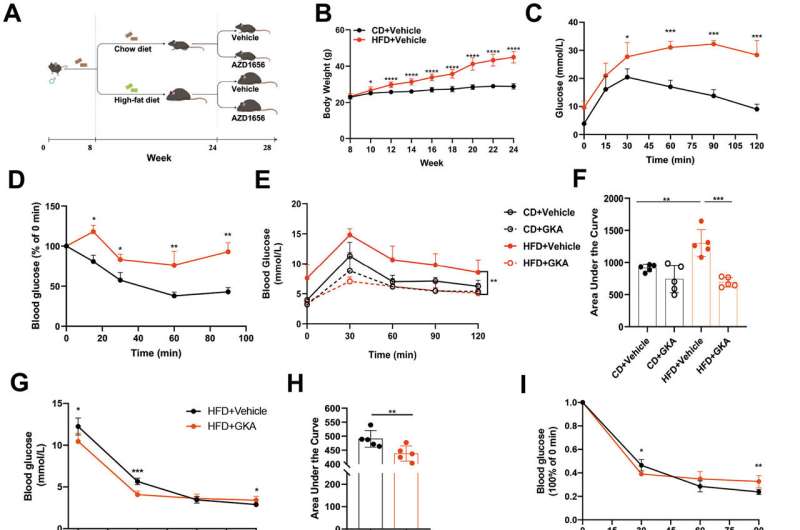by KeAi Communications Co.

GKA treatment improved glucose tolerance in diet-induced obese mice. (A) Cartoon of the experimental design. (B) The body weight of the chow diet (CD) and high-fat diet (HFD) fed mice (n = 10 for each group). (C, D) IPGTT and ITT of mice fed an HFD or CD for 16 weeks (n = 4–5 for each group). (E, F) OGTT analysis of mice with different treatments for 4 weeks, indicated as CD + Vehicle, CD + GKA, HFD + Vehicle, and HFD + GKA. AUC was shown in (F) (n = 5 for each group). (G) ITT and (H) AUC as well as (I) normalized ITT analysis after 30 days of glucokinase activator (GKA, AZD1656) treatment (n = 5 for each group). (J) The fasting plasma insulin and (K) fasting blood glucose levels were analyzed as indicated (n = 5 for each group). (L) HOMA-β and (M) HOMA-IR were calculated accordingly as described in the “materials and methods” section (n = 5 for each group). The heatmaps of (N) glucose metabolism and (O) insulin signaling pathway related genes from indicated groups of mice were demonstrated from transcriptomic analysis (n = 3 for each group). (P, Q) Protein expressions of the insulin signaling pathway were determined by Western blot, with quantification shown in (Q) (n = 3 for each group). Data are presented as the mean ± standard deviation (SD), ∗P
>>> Read full article>>>
Copyright for syndicated content belongs to the linked Source : Medical Xpress – https://medicalxpress.com/news/2023-08-gka-glucose-tolerance-hepatic-lipid.html































